





With the continuous miniaturization and complexity of component packaging technologies in the 3C electronics, semiconductor, and other fields, then manufacturers need to integrate high-parallelism and multi-functional testing platforms for meet higher yield requirements with shorter product development cycles. In this way, the turret test sorting and taping equipment now is popular because it improves efficiency and enables technology reuse, that is, with higher production capacity, and lower overall testing costs.
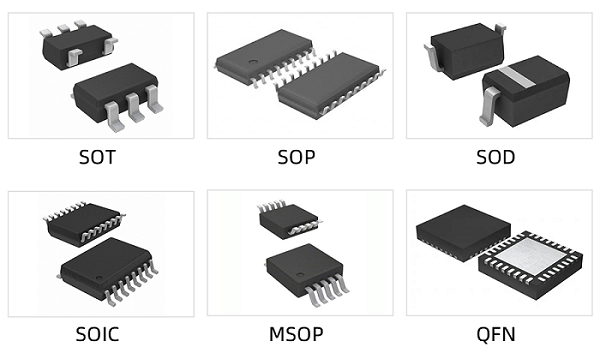
[Various Chips of Semi-Conductor Packaging]
What is Turret Test Sorting and Taping Equipment?
Turret test sorting and taping equipment is mainly used in the post-packaging testing of components in industries such as 3C electronics and semiconductors. It can operate synchronously and with multi-station through servo drives and high-speed motion control. Specifically, it will do chip feeding, functional and electrical performance testing, sorting, and taping within a single cycle to make sure that the final products meet design specifications.
Compared to other testing and sorting equipment (such as gravity-based and linear types), turret equipment offers superior motion control performance: comprehensive testing tasks can be completed in a shorter time (with the highest hourly output and the lowest testing costs). Because the processing time directly impacts the throughput of mechanical motion control performance and testing costs in serial testing.
According to the market tendency, equipment manufacturers face challenges in improving precision, speed, multi-axis synchronization, and flexible scalability. Therefore, motion control solutions with high bandwidth, low latency, and real-time synchronization capabilities are needed to efficiently integrate and process large amounts of data from process control units, enhancing throughput.
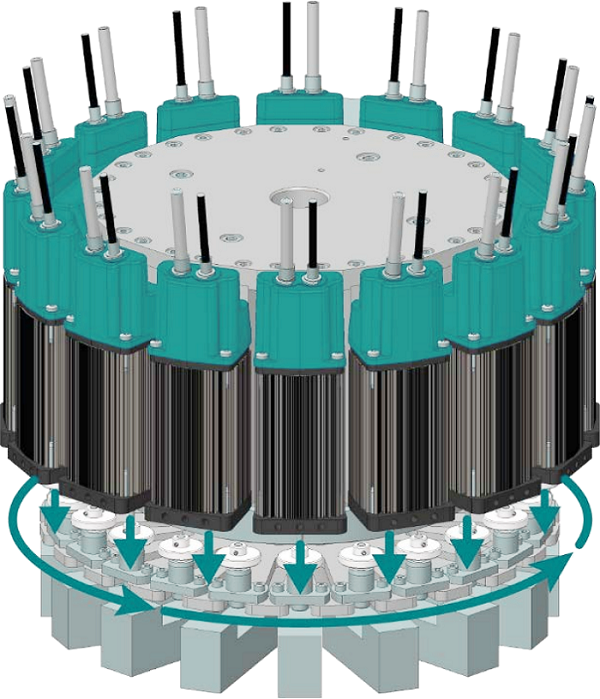
[Main Turntable of Turret Test Sorting and Taping Equipment]
Then:
To meet market demands and increase production capacity, Zmotion has developed a motion control solution based on the ultra-high-speed PCIe EtherCAT motion control card (PCIE464M). Centered on an IPC + a PCIE464M control card + the machine vision system, which provides maximum configuration flexibility for turret test sorting and taping equipment, catering to diverse production and testing requirements.
The solution can process feedback signals in microseconds, optimizing testing, sorting, and taping strategies in real time. It achieves high-speed, high-precision feed motion control, multi-channel parallel data processing, high-speed data transmission, and coordinated motion across multiple axes.
This solution effectively optimizes traditional processes, improving testing and sorting efficiency and accuracy while reducing overall testing costs. With EtherCAT cycles as fast as 125us!
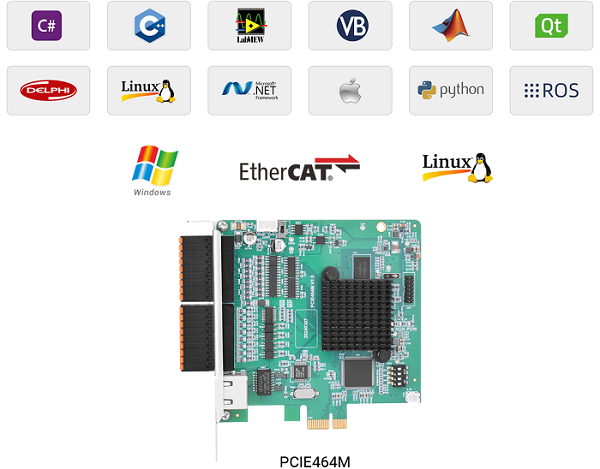
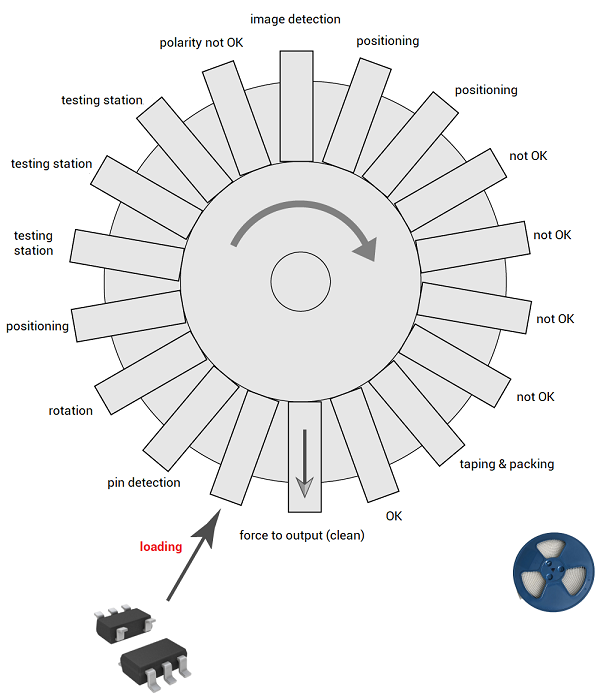
[Specific Station & Function]
1. Zmotion PCIE464M Turret Test Sorting & Taping Solution Introduction
(1) Comparison & Optimization
*Traditional Motion Control*

Like above shown, in traditional turret test sorting and taping equipment, it primarily relies on a combination of PLC (Programmable Logic Controller), touchscreens, IPC, and machine vision as the core components. However, there are several limitations when it comes to complex multi-station automated equipment:
A. Inefficient Debugging & Diagnostics
PLC and IPC use separate debugging interfaces, that is, engineers need to frequently switch between screens during debugging and fault diagnosis. Obviously, this significantly reduces operational efficiency.
B. Limited Response Speed of PLC
PLC operate based on fixed scan cycles, making it difficult to meet the high-frequency testing and sorting demands of turret equipment. This limitation hinders the overall motion control performance.
C. Slow Data Communication
The data interaction rate between the PLC and PC is slow, resulting in reduced overall equipment productivity and throughput.
*Zmotion Turret Test Sorting and Taping Motion Control Solution*
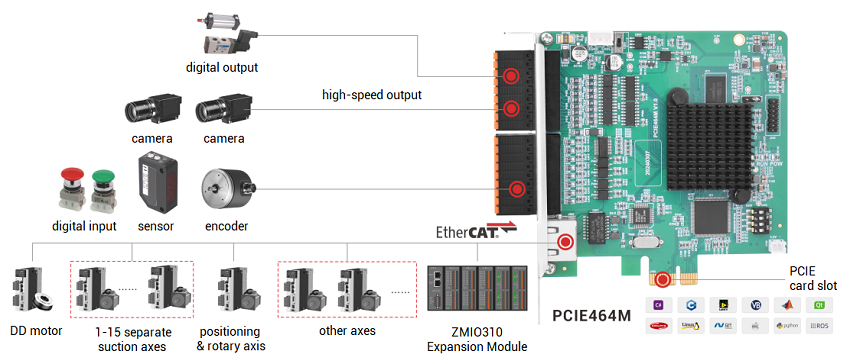
-- EtherCAT Port--
Motion Control:
Connect to DD motors and bus servo drives to control the motion of the turret and nozzles.
Support ultra-fast EtherCAT cycles as quick as 125us.
IO Expansion:
Expand with EtherCAT IO modules for more IO resources.
-- IO Input--
Connect to sensors, switch inputs, and other signals for real-time data acquisition.
-- IO Output--
Connect to solenoid valves for operations such as suction, blowing, and vision snapshot triggering.

This solution uses PCIE464M control card, IPC and machine vision, which can process servo, pneumatic cylinders, and capture & control peripheral signals. The PCIe interface enables high-speed data exchange with testing machines, marking machines, and image inspection systems, simplifying debugging and significantly improving response speed.
PCIE464M has the EtherCAT interface, then it can achieve high-precision multi-axis synchronous control. And there are high-speed I/O interface, which allows real-time processing of feedback from sensors and vision systems, enabling rapid triggering of actions such as turret rotation and nozzle pickup: this enhances the production capacity of turret test sorting and taping equipment to over 50,000 pieces per hour (50+Kpcs/h), with overall efficiency improved by 6% to 15%.
(2) Motion Control Process
During operation, the turret driven by a DD motor rotates at high speed, while suction nozzles, under multi-axis coordinated control, sequentially transport chips to each testing station. The suction nozzles on the turret can independently adjust their vertical positions to meet multi-functional inspection and operational requirements. In a word, it can achieve precise trajectory planning and multi-axis synchronous interpolation by high bandwidth and low latency of PCIe and EtherCAT.
It supports PT (Position-Time) and PVT (Position-Velocity-Time) motion modes, enabling seamless switching between online variable-speed, position, velocity, and torque modes. At the same time, combined with high-speed vision snapshot triggering, the system rapidly activates cameras for multi-station flying image capture.
Specifically, in this motion control process, it dynamically optimizes the turret speed, pick-and-place sequence, feed rates, and sorting strategies based on real-time feedback. Then it ensures efficient and stable testing and sorting processes, significantly enhancing equipment throughput and production efficiency.
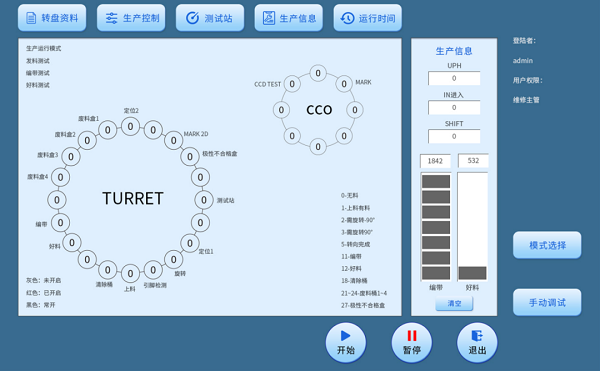
*Control Specific Process*:
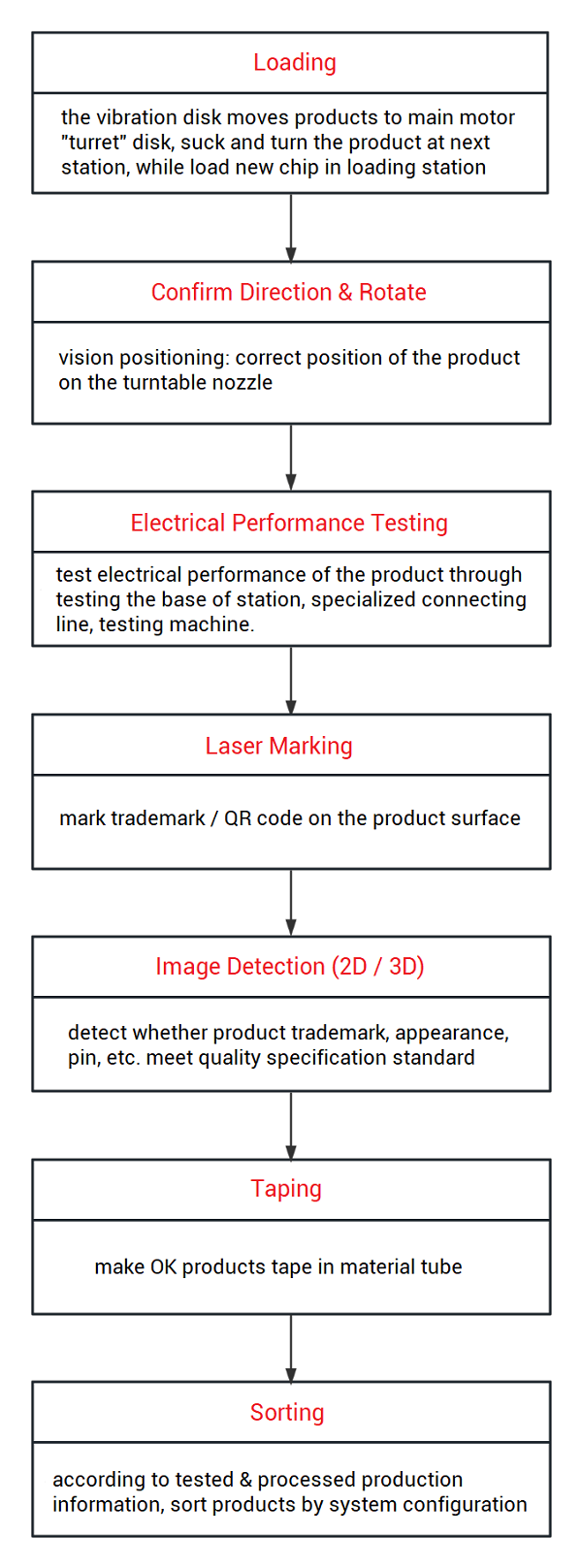
Advantage 1: Do Motion Control with Your IPC
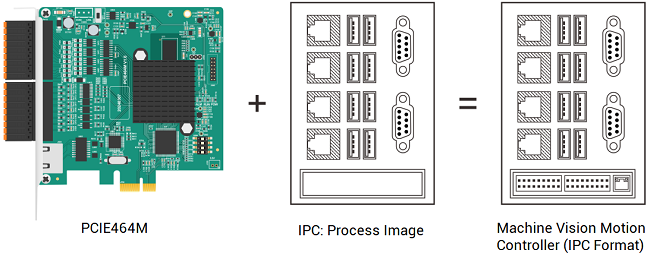
PCIE464M + IPC / PC for image processing, no need to configure extra IO data acquisition card and PLC, then it can be used as one machine vision motion controller in the format of IPC. This innovative integration simplifies hardware architecture while reducing costs through seamless software-hardware unification.
It can be known “vision & motion control & data processing” are integrated in one PC, which can reduce system data transfer delay and synchronous control complexity, enhancing real-time performance and operational stability for turret equipment applications requiring high-speed rotation, precision testing, and multi-station sorting capabilities."
Advantage 2: Trigger Camera by Vision in Motion
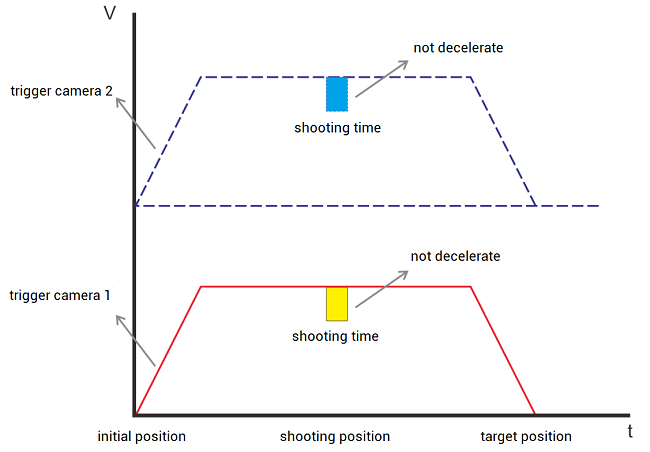
PCIE464M motion control card supports hardware position comparison output at high speed, which means it can trigger the camera to do vision shooting while moving, even it can do that synchronously for multi-station. In this way, no need to stop for shooting like traditional solution, the CT running can be reduced, then promoting whole equipment productivity.
Then, below core technology advantages can be concluded:
a. Easy to Develop
Develop by PC host computer languages (C++ / C# / LabView / python…), all series products call the same set of API function – library file & examples can be obtained here “https://www.zmotionglobal.com/download.html ”.
b. Trigger to Do Vision Fly-Shooting
There are 12 independent hardware position comparison outputs “PSO” , which can achieve fly-shooting at multi-station at the same time, machine CT time can be reduced.
c. Latch Position
There are high-speed inputs, which can do position latching.
d. Higher Production Efficiency
The equipment boosts units per hour (UPH) to over 50K, delivering a 10%+ productivity increase compared to traditional solutions.
e. Customize Control
You can customize IO signal allocation and expand control axes according to specific project requirements, ensuring tailored solutions for diverse testing processes and personalized configurations."
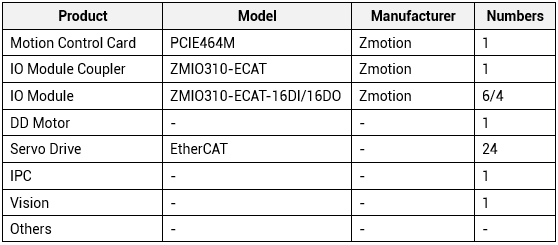
--Hardware EtherCAT Motion Control Card PCIE464M Introduction--
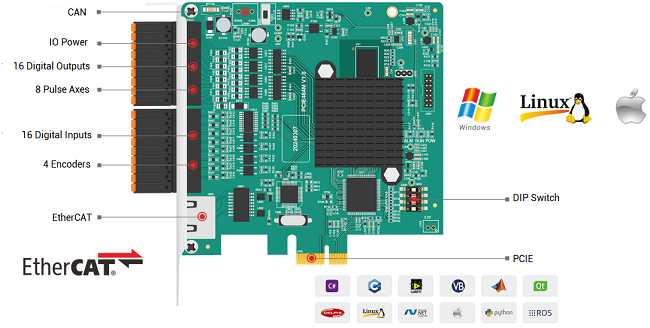
Multi-Axis Synchronous Control & High-Speed High-Precision Motion Control under “PC + Motion Control Card” mode!
6-64 axes motion control to control EtherCAT / pulse / stepper servo drives.
Linkage axes can be up to 16 axes.
Min control period is 125us.
There are 16 digital inputs and 16 outputs: 4 are high-speed latch inputs, 4 are high-speed PWM, 12 are high-speed camera triggering “PSO”, specifically, it supports PWM outputs, 1D / 2D / 3D hardware position comparison outputs, vision fly-shooting, continuous interpolation, etc.
It can save and interrupt when power off, the program can be protected well by several encryptions.
Achieve higher precision because it has 1D / 2D helical compensation.
8 single-ended pulse axes + 4 single-ended encoder axes
+30 robotic models are supported, including SCARA, Delta, UVW, and 4-axis/5-axis RTCP, etc.
PS: PCIE464M Card Video Introduction: https://youtu.be/RKA8ijcndQc